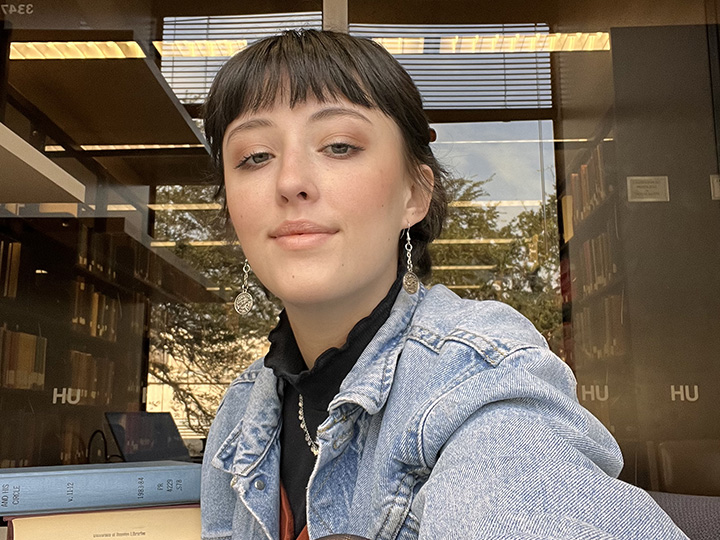
Junior English Major Alissa Boxleitner recently received the Provost Undergraduate Research Scholarship (PURS) in support of her research toward developing a feminist literary framework for analyzing bodily transformation in textual and visual mediums. Her PURS project compares Myriam Gurba’s 2017 memoir, Mean, with the collected artwork of Earth-body artist Ana Mendieta (1948 – 1985). Before transferring to UH last year, Ms. Boxleitner attended Lone Star College, where she published and presented her award-winning original research on hyper-sexualization at middle school dances as part of the National Conference on Undergraduate Research and the Richard Mackey National Undergraduate Humanities Research Symposium.
Dr. Haylee Harrell, Assistant Professor of Black Studies, encouraged Ms. Boxleitner to join the honors track and is currently her honors mentor. According to Dr. Harrell, “Alissa’s sophisticated research reads social-cultural issues across artistic mediums, bridging the gap between academic discourse and the violence experienced by women in our historical present.” With the support of Dr. Harrell’s mentorship and PURS, Ms. Boxleitner’s research explores “how female-identifying storytellers (re)claim, transform, destroy, and (re)birth the feminine body within the context of sexual violence.”
FORWARD spoke with Alissa Boxleitner to learn more.
FORWARD: We heard you’re currently enrolled in Dr. Harrell’s graduate-level course, “Thinking Black Feminisms Otherwise.” What’s it like to be an undergrad in a graduate seminar?
Boxleitner: Dr. Harrell comes at her work from a lot of different angles, like I do, and I really love her classes. It’s been an honor to step into places where I'm a little bit out of my depth and start filling gaps in my knowledge. A graduate seminar is a heavy reading load, but the other students in the class have been so gracious in welcoming me into this new environment where we’re having deep conversations about important texts. I feel lucky to get to sit and think and speak alongside everyone there.
FORWARD: Your project is interdisciplinary. Could you speak to how you came to analyzing textual and visual mediums side by side?
Boxleitner: I'm drawn to both Mendieta’s body art and Gurba’s memoir of coming of age as a queer Chicana for how both women address not only female embodiment and violence, but how we can heal through art. I'm an artist too and I'm really interested in the idea of collage, of overlay, of the interplay of literature and visual art. Since PURS is a one-semester program, I wanted a specific text to anchor my research. I happened to have just read Mean and fell in love with it. Gurba references Mendieta in her book; she puts her own literary work in direct conversation with Mendieta’s body art in a fascinating way.
FORWARD: Have you received important guidance on your project from other professors in the Department?
Boxleitner: I spoke with Dr. Amanda Ellis, and she gave me great advice: define my own stakes in this research; make sure I explore why it matters personally to me. She also said these are the kind of topics you get to explore when you're working in the feminist field. Sexual violence against women is such a personal topic that I want to make sure I’m being sensitive and thoughtful. I'm also really interested in the idea of art and writing as a means of healing and healing yourself. I love the memoir as genre. That's the kind of stuff I'm drawn to—how we deal with ourselves and put ourselves back together after surviving gender-based violence.